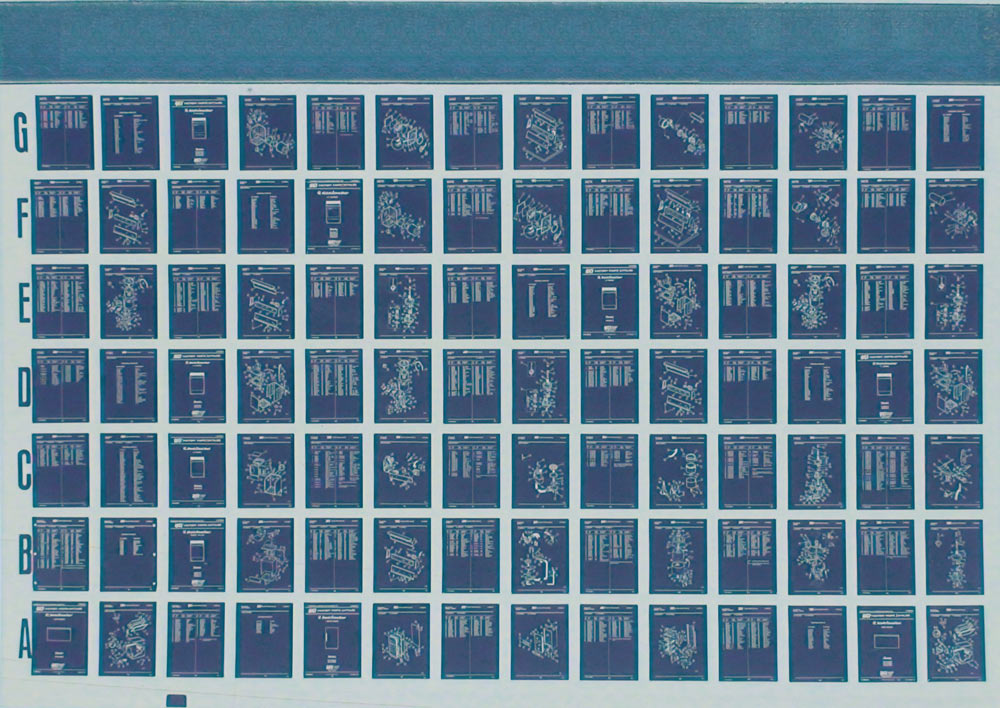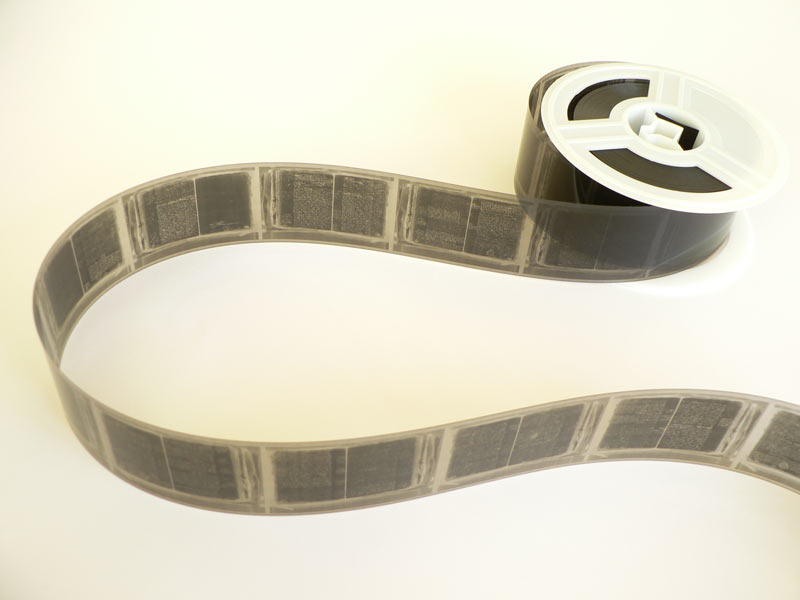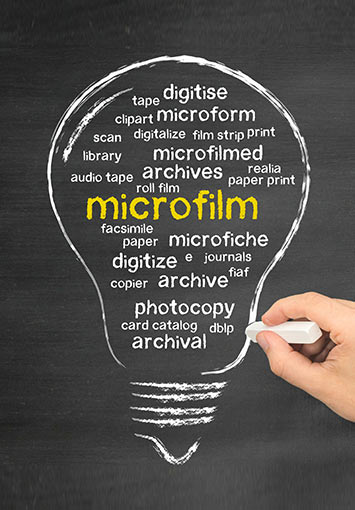When it comes to storing documents in a compact, durable format, microfiche and microfilm have been the go-to choice for records storage for decades. Government agencies, museums, and libraries have relied on these formats for years, using them to archive everything from historical documents to public records.
It’s also not unusual for individuals to have important microfilm records, such as military records, family histories, and academic research. However, for those individuals, making use of these records can be difficult. That’s why many people look for ways to digitize these records to have better access to them.
In some cases, people don’t know what kind of film they actually have on hand, which can make the digitization process difficult.
The purpose of this article is to help you understand the differences between the various types of microfilm and microfiche, along with the related terminology, so you can identify which one you have and take the necessary steps to digitize your valuable records more easily.
What is a Microform?
Before we get into the differences between microfilm and microfiche, let’s talk about their similarities. Both microfiche and microfilm are types of microforms.
A microform is a miniaturized reproduction of a document or many documents stored on film. Microforms store documents at roughly 1/25th of their original size, which allows you to store large volumes of information in a small amount of space.
To view, print, or digitize microforms, you need specialized equipment. For microfiche, this includes microfiche readers and scanners. For microfilm, you would use microfilm readers and reel-to-digital converters.
You’ll find microforms being used in all sorts of places because of their efficiency and durability. Here are some common examples:
Libraries
Libraries use microforms to archive books, periodicals, and newspapers, preserving valuable information in a compact format.
Government Agencies
Government agencies store public records, legal documents, and historical archives on microfilm to ensure long-term preservation and easy access.
Academic Archives
Academic institutions rely on microfilm to preserve research papers, theses, and dissertations, keeping important academic work safe and accessible
Corporate Archives
Businesses use microforms to maintain records of financial documents, patents, and other important papers, helping to manage space and protect information.
Museums and Research Institutions
Museums and research institutions safeguard historical artifacts, manuscripts, and research materials on microforms, ensuring these valuable resources are preserved for future generations.
What is Microfiche?
Microfiche is a flat sheet of photographic film that is used to store printed information in a miniaturized form. Typically measuring 4 by 6 inches, each microfiche sheet contains a grid of reduced images of the original documents.
Key Features of Microfiche:
- Compact Storage: Microfiche is great for saving space. These flat, sheet-like films are easy to store, making them perfect for places with limited room.
- Easy Access: Finding what you need is easy with microfiche. Each sheet typically holds multiple related documents in a grid pattern, so you can quickly locate specific information without winding through reels to find a specific document.
- Durability: Made of high-quality photographic film, microfiche is resistant to deterioration, making it the perfect choice for long-term preservation of documents.
- Usage: You’ll often find microfiche in libraries, archives, and research institutions. It’s ideal for storing small collections of documents like technical manuals, periodicals, and military records.

What is Microfilm?
Microfilm comes in continuous reels of photographic film, usually available in widths of 16mm or 35mm. Documents are stored sequentially on the film strip, which is rolled onto a reel, allowing for efficient archiving of large volumes of information.
Key Features of Microfilm:
- High Capacity: Microfilm is perfect for storing large volumes of information. The continuous reel format means you can fit thousands of documents on a single roll, making it incredibly efficient for extensive archives.
- Sequential Access: With microfilm, documents are stored in sequence on the film strip. While it might take a bit longer to wind through the reel to find a specific document, this format is excellent for bulk storage.
- Preservation: Just like microfiche, microfilm is made from high-quality photographic film, ensuring that your documents are preserved for the long term without degrading.
- Usage: Widely used in large archives, legal offices, and institutions that require extensive storage capabilities. Its compact nature makes it ideal for preserving vast amounts of information without taking up a ton of space.

Microfiche vs. Microfilm
While both microfiche and microfilm serve the purpose of document preservation and space-saving storage, they do have some key differences.
Microfiche is a flat, rectangular sheet, making it easy to store and quickly access individual documents. Microfilm is a continuous reel, which can hold thousands of documents but requires winding through the reel to find specific items, making it less convenient for frequent access.
Microfiche is great for smaller collections that need quick retrieval, while microfilm is ideal for large archives where storing a high volume of documents in a compact form is essential. By understanding these differences, you can choose the format that best suits your needs, whether you need quick access or are managing a vast amount of records.
| Microfiche | Microfilm | |
|---|---|---|
| Form Factor | Flat, rectangular sheet | Continuous, cylindrical reel |
| Document Access | Immediate access to individual documents | Requires winding through the reel |
| Storage Capacity | Limited by the grid size on each sheet | Can store thousands of documents on a single reel |
| Common Uses | Small collections, frequent access | Large archival projects, less frequent access |
Now is The Time to Digitize Your Microfilm and Microfiche
Now that you know what kind of film you have, it’s time to think about the benefits of digitizing it. Converting your microfilm and microfiche records to a digital format can provide easier access, better preservation, and more efficient storage of your valuable records.
There are a few different ways to scan microfiche and microfilm depending on your specific needs and resources.
If you’re looking for an easiest possible solution, SecureScan is the answer. With over 22 years of microfiche and microfilm scanning experience, we make the process of digitizing your microfiche quick and painless. We offer a mail-in microfiche scanning service, allowing people from anywhere to take advantage of our expertise and get better access to their records.
Our microfiche and microfilm scanning service is perfect for libraries, government agencies, and other organizations with large volumes of film to digitize. Our service is secure, efficient, and affordable. Our trained technicians know how to properly handle microfiche and microfilm, ensuring that your records are treated with care and digitized accurately.
For more information about our standard scanning services or our mail-in service, contact us to speak to a scanning technician who can make recommendations about your options, or get a free quote directly through our website. Let SecureScan help you transform your microfilm and microfiche into easily accessible digital files.
